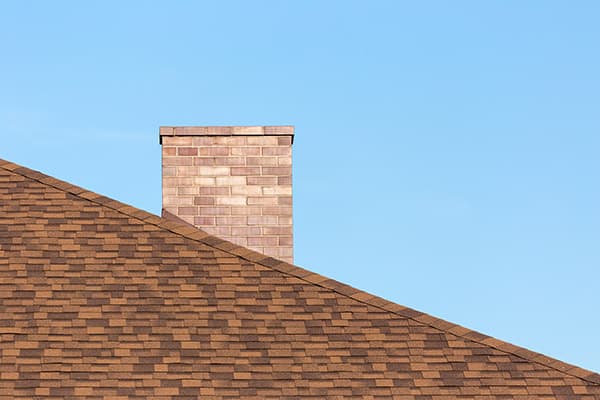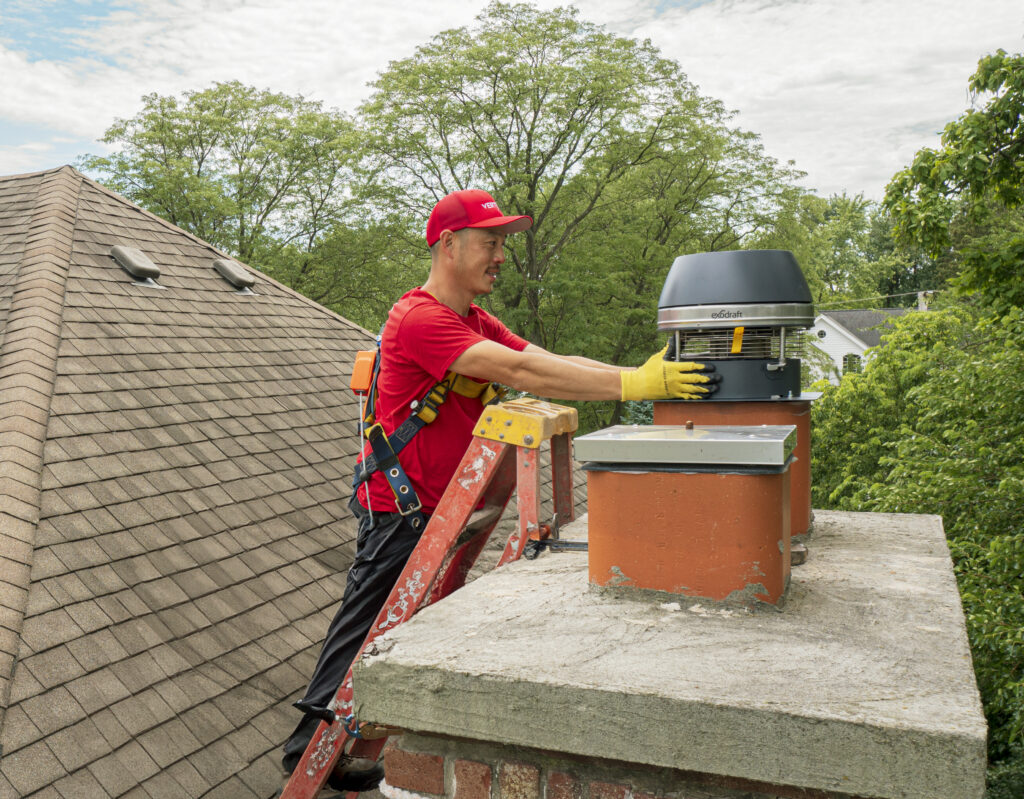
Burning wood isn't always the only odor that comes from your fireplace. Chimneys can have all sorts of things go wrong with them and often are a result of a blockage inside of it.
This blockage can come in many different forms - if you have a bad smell that's flowing through your home you may need to take the time to clean it out properly.
To diagnose your problem outright let's take a look at some of the most common sources of bad chimney smells.
Leaves and Branches
Have a smell of rot or decomposition coming out of your chimney? Then you may have leaves and other things like moss, branches, and whatnot located up there. Often resulting from animal nests (more on them later!), leaves can also enter the area through a storm.
A large number of leaves can accumulate on the top of the chimney creating a blockage - making it not only smelly as it rots throughout the year but even dangerous as it can start a chimney fire.
Even a few branches or leaves can do the trick too if your chimney is flooded with creosote and soot. That is why it is important to have a chimney cap and crown properly installed - not only do these pieces keep out water but work even better keeping other things out as well.
Animals Can Be a Pain
There are multiple types of animals that often find their way inside chimneys - whether it be as a result of warmth, darkness, or just a safe area to be, animals love to make homes inside brick stacks. If you see any scat or dead animals then you can be sure that you might have a minor infestation inside your chimney.
Of these, birds are the most common and can often cause some of the biggest problems for homeowners as they are known for creating nests. As mentioned previously, leaves and branches can result in all sorts of blockages and fire hazards.
Many birds can carry diseases like histoplasmosis which can cause blindness making removal of them deadly. To make matters worse removal of many bird species is actually illegal, making it particularly difficult to maneuver around this issue.
Other animals that are often found inside chimneys include bats, squirrels, and raccoons. All of which like small dark areas. These animals can carry all sorts of diseases like rabies or roundworm, while also potentially causing home damage if they make their way inside.
Removal of these animals should only be done by a licensed animal professional, while prevention can be a combination of poisons, keeping the chimney clean, and making sure a cover is placed over the top of the chimney.
Moisture Is Never Good
One of the most common sources of fireplace and chimney odors is moisture. An excess of moisture is usually observed with a musty odor emanating from the chimney. Moisture can find its way in from multiple areas and can cause more problems than just being a slight inconvenience.
Water often mixes with creosote to create a semi-toxic miasma that permeates through the structure and into the home. Wiggling its way past the chimney itself, moisture can seep into the home itself creating mold in the rafters and walls.
Damage to the chimney cap can just let rain or snow right down into the stack, while an inefficiently designed or undermined crown can let it subtly flow in. Erosion of the outside brick and mortar can result in cracks, chips, and spalling all of which lets water flow more readily inside. Even brick that looks good on the surface can still absorb water as the erosion of time makes it more porous.
Further down the flashing, the area between the roof and the chimney that serves to seal it can become damaged with time allowing the slow tick of water.
A moisture smell is often indicative of a larger structural problem with your chimney and if left alone can create numerous problems ranging from the mold, water damage, and potentially even collapse of the chimney. Fixing this problem depends greatly on what the source of the moisture is.
Creosote Builds Up Quickly
Burning wood results in not only heat but smoke as well - this smoke contains all sorts of substances locked deep inside of the wood. Of these, it is carbon that is the most plentiful and sticks to the inside of the chimney flue in the form of creosote.
A build-up of creosote inside a chimney is fairly common and can have a strong smoky smell akin to either asphalt or tar. Even a small amount can have a strong odor and depending on your situation can be smelled throughout the home.
The smell of creosote is usually just one of the first signs of a bigger problem. Creosote build-up can put extra stress on your chimney flue - this is the part of the structure that serves as a layer to protect the inside of the chimney. Creosote can make previous problems - such as those related to leaves, animals, and moisture - that much worse as this substance can block and mix to create an even more toxic substance.
Lighting a fire in a chimney that hasn't been cleaned lately can also start a chimney fire - small bits of sparks and embers can float to the top to where the creosote is located and easily ignite the extremely flammable substance.
To prevent creosote smell and further related problems you need to make sure your chimney is cleaned out by a professional at least once a year. In fact, chimney cleaning should be a fairly routine thing if you own a chimney and should never be skipped.

Negative Air Pressure
All of the above might go unnoticed if it wasn't for a little thing called air pressure. When working efficiently, the hot air of the chimney rises upwards out of the top. As you probably learned in grade school hot air rises and cold air falls - although sometimes this principle can be interrupted.
Negative air pressure can result when there is actually slightly less air located inside of the home than outside of it - result in the air movement actually going down the chimney rather than up it. This is especially relevant during the warmer summer months. Thankfully there are multiple solutions to this problem.
The short term is to open a window and equalize the air pressure better - newer homes often have the problem of being too efficient in terms of keeping the outside air out, resulting in the air going through the chimney.
For a more long term solution make sure to have the fire damper closed when the fireplace isn't in use - slight damage or bad installation can still result in negative pressure problems though, so be careful.
A glass fire screen in front of the fireplace can be an extra barrier to deter negative air pressure even further. Finally, other combustion appliances such as stoves can be installed with outside air flow.
Get Rid of Those Awful Chimney Odors
Some of the most common sources of chimney smell are from a build-up of leaves and creosote. Animals can leave all sorts of leftovers and dead insects that are as macabre as they are bad smelling.
Moisture can exasperate all of the above problems and create more, with something like negative air pressure pushing all of this smell right into your home.
The primary source of these smells is multifaceted but the solution is often just a result of keeping the chimney cleaned out and repaired as necessary.
Chimney Odor Cleaning
Chimney odor is an unpleasant smell for chimney owners. The best way to prevent odor from occurring is to hire a professional certified chimney company to inspect and clean your chimney. At Vertical Chimney Care, we have all the equipment and tools to clean out any odor coming from your chimney. Contact us today to speak with a product specialist!
